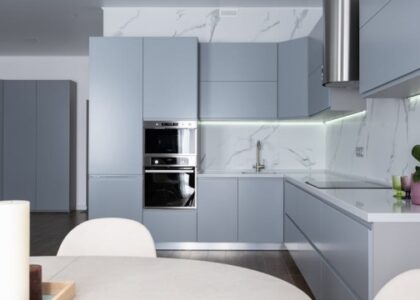
Deciding to install a pet door can greatly enhance the convenience of pet ownership. It provides pets with the freedom to go outside when they need to, without requiring constant supervision from their owners. This not only helps in managing their bathroom needs but also allows them to enjoy playtime outdoors, fostering a happier and healthier lifestyle. However, with various options available, choosing the right pet door can be daunting. This pet door selection guide aims to simplify the decision-making process by exploring different types of pet doors, key factors to consider, and recommendations based on user needs.
Understanding Different Types of Pet Doors
Pet doors come in various styles, each with its own set of advantages and disadvantages. The following are some common types:
Flap Doors
These are the most traditional type of pet door. They consist of a flexible flap that pets can push open. Flap doors are typically easy to install and can be found in various sizes to accommodate different breeds.
- Pros: Affordable, easy to install, suitable for most pets.
- Cons: May let in drafts, not as secure against intruders.
Electronic Doors
Electronic pet doors offer an advanced option that can be programmed to open only for your pet. They often come with a collar key that activates the door, ensuring that only your pet can enter or exit.
- Pros: Enhanced security, reduces the risk of unwanted animals entering.
- Cons: More expensive, requires batteries or a power source.
Sliding Door Inserts
If you have a sliding glass door, a sliding door insert can be an excellent option. These inserts fit into the track of the door and include a built-in pet door.
- Pros: Maintains aesthetic appeal, easy to install.
- Cons: Can be costly, may not be as energy efficient.
Key Factors to Consider When Choosing a Pet Door
When selecting a pet door, it’s crucial to consider several key factors to ensure it meets your household’s needs:
| Factor | Description |
|---|---|
| Size | Choose a size that suits your pet’s breed and weight. |
| Material | Consider durability and weather resistance, such as plastic or metal. |
| Insulation | Look for energy-efficient designs to minimize drafts. |
| Security | Evaluate locking mechanisms and overall security features. |
Top Recommendations for Pet Doors Based on User Needs
Depending on your specific needs and budget, here are some recommended options:
Budget-Friendly Option
A simple flap door made of durable plastic is often the most economical choice. This type is suitable for small to medium-sized pets and provides basic functionality without breaking the bank.
Mid-Range Option
For those looking for a balance of functionality and price, consider a medium-sized electronic door. This option provides added security while being user-friendly.
High-Tech Solution
If you prioritize convenience and security, a premium electronic pet door that syncs with your smartphone may be the best choice. These often include advanced features like scheduling access and monitoring pet activity.
In conclusion, choosing the right pet door can significantly improve your pet’s quality of life while providing convenience to you as an owner. By using this pet door selection guide, you can better understand the options available and make an informed decision that suits your unique household needs. For more detailed insights and specific product recommendations, you can visit this resource.






